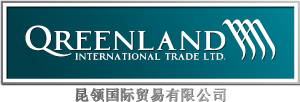Juli 8, 2018
Pricing
10 Retail Pricing Strategies
that increase profitability

There are many factors that influence the bottom line of your retail business, including the right price for your products that hit the maximization of your unit sales without sacrificing profit per unit. It’s crucial to understand your cost structure in order to choose the right pricing strategy, hence, achieving your profit goals. There are many pricing strategies that you could apply to your retail business. But the most effective method to find the right price is to experiment with pricing.
Before you start to experiment finding the right pricing strategy, you need to consider the direct cost of your products and related expenses. These two key elements are also known as „cost of goods“ and „operating expenses“.
Cost of Goods:
The direct cost of your products include the procurement price, plus any shipping and handling costs including customs. In case you manufacture products, you should add any cost that are related to direct labour expenses.
Operating Expenses:
All operational processes require manpower, resources and investments. Hence, finding the right pricing strategy you need to include operating expenses to your overall calculation such as advertising, payroll, marketing, building rent, office supplies and some more.
Regardless of the pricing strategy, every retail price of your products must cover these overall costs otherwise you won’t make sufficient profit to succeed with your retail business. Hence, don’t offer your products below overall costs.
Pricing Strategies
If you want clarity on the right price for your products you should have a look on your competitors’ prices that helps to establish a benchmark for your product price. In addition to that, you should examine appropriate distribution channels to reach customers in different marketplaces such as your own online-shop, Amazon, eBay, brick-and-mortar stores and many more. Furthermore, you should conduct a research on what customers are willing to pay or have paid for products or similar products. There are many useful pricing strategies that exist to refine your product prices. In order to develop the best pricing strategy for your retail business, you need to understand that the ideal pricing strategy depends on more than costs. Right pricing strategies depend on good pricing practices as well. If your read through the following pricing strategies you will find one that might work for your retail business.
1. Markup Pricing
Basically, you add a profit margin percentage to your overall cost of your product. That will be your markup. If you decide for a markup of € 25 that is already added to the final product price of € 50, your profit margin percentage (markup percentage) is 50 %.
€ 25 (markup) / € 50 (retail price) = 0.5 —> 50 %
You should keep your markup high enough in order to allow price reductions and discounts, also shrinkage. Of course, you can use different markups for your products.
2. Vendor Pricing
This strategy, also know as MSRP (manufacturer suggested retail price), is popular among small retail shops as it avoids price wars while still maintaining profit. In addition to that some suppliers use MAP (minimum advertised price) that restricts retail shops to price their products below MAP. It’s common practice among suppliers to suggest a higher MSRP for their products than MAP. Any products with MSRP frees retailers from decision-making processes while blocking any price advantages over competition.
3. Competitive Pricing
The market is quite saturated with all kinds of products offered by retailers. Hence, consumers are enabled to pick from a vast range of products while comparing best value for price. Therefore, retailers are challenged to create outstanding customer services and value-added services in order to stand above the competition.
Pricing Below Competition:
It simply means that you price products lower than the competitor’s price. This strategy works nicely for retailers that are able to independently negotiate and procure products at a low buying price from suppliers. In addition to that, retailers should reduce overall costs and develop a marketing strategy that focuses on price reductions.
Pricing Above Competition:
If you have a brick-and-mortar store on a high street, stand for exclusivity or have an outstanding customer service, you can justify higher prices.
4. Psychological Pricing
The main idea of psychological pricing is to let the consumer perceive your retail price for a product to be fair, to be a bargain or even a sale price. Here, odd-pricing is often used such as figures that end in 5, 7 or 9 (€ 19.95). There is a tendency that consumers round down a price of € 19.95 to € 19 rather than € 20.
5. Keystone Pricing
If your double the cost you paid for your product to set the retail price the strategy is called keystone pricing. This pricing strategy was often used but many retailers shifted to other methods to find the right price due to increased competition and a changing retail landscape. Nevertheless, you still find some stores that sell high-end products to less price sensitive customers, using keystone pricing.
6. Multiple Pricing
If you decide to sell more than one product for one price (3 item for € 5), consumers tend to buy larger amounts. Also, multiple pricing strategy works well for markdowns and sales events.
7. Discount Pricing
It’s very popular among retailers to focus on price reductions and discounts that include coupons, rebates, seasonal prices and other promotional markdowns. Sometimes, you need to decide for pricing below cost in order to reduce dead capital such as loss leader. Nevertheless you make no profit, advertising loss leaders at price below cost might attract more customers into your store who buy discounted products while adding products at higher margins to their basket, too.
8. Economy Pricing
This strategy is for price sensitive customers and is often used at discount supermarkets and textile stores. Retailers that use economy pricing attract more customers by minimizing costs that are associated with marketing and procurement in order to keep prices down.
9. Price Skimming
This practice is very common for retailers that aim at the maximization of sales on new products. During an introductory phase it involves setting prices high. Gradually the company then lowers prices to the prices of competitors. The main advantage is to maximize profits on early purchasers before lowering the price to attract price sensitive customers.
10. Bundle Pricing
Especially small retail businesses use bundle pricing to sell multiple products for a lower price than customers would pay for an item individually. This method allows you to reduce dead capital by selling unsold items and moving inventory faster to obtain more space in your facilities. Additionally, it creates the image you offer customers something for free, hence, satisfied customers will buy again.
Tags:
- benchmark
- bottom line
- brick-and-mortar store
- bundle pricing
- calculation
- common practice
- competition
- competitive pricing
- consumer
- cost
- coupon
- customer
- dead capital
- decision making
- direct cost
- discount
- discount pricing
- distribution channel
- economy pricing
- exclusivity
- expense
- experiment
- factor
- good
- introductory
- inventory phase
- item
- keystone pricing
- loss-leader
- manufacturer
- manufacturer suggested retail price
- MAP
- margin
- markdown
- marketing
- markup
- markup percentage
- markup pricing
- maximization
- method
- minimizing
- minimum advertised price
- MSRP
- multiple pricing
- negotiate
- odd-pricing
- online-shop
- operating
- operating expense
- overall cost
- payroll
- price sensitive
- price skimming
- pricing
- pricing above competition
- pricing below competition
- pricing strategy
- procurement
- product
- profit
- profit margin percentage
- profitability
- psychological pricing
- rebate
- reduction
- research
- retail landscape
- retail price
- retailer
- supplier
- value added service
- vendor pricing

